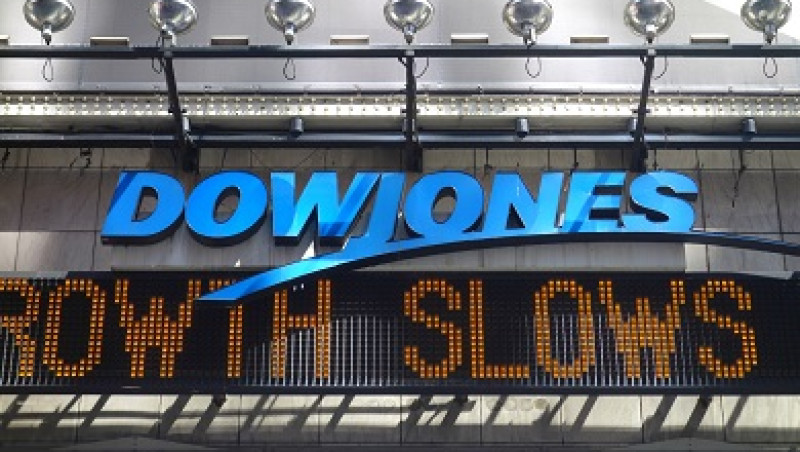Image source: © Kendrysdale, Megapixl.com
The Dow theory is a financial theory derived from Charles H. Dow’s editorials. Charles Dow was one of the co-founders of Dow Jones & Company, Inc.
The Dow theory basically states that a change between bear and bull outlook in a stock market will happen if confirmed by other indices. The theory is established on a set of ideas derived from Charles H. Dow’s editorials.
The original version of the Dow theory states that the market rises if one of its averages (e.g., industrials or transportation) crosses a previous important high and is followed by a similar rise in another average. For instance, to confirm a trend, if the Dow Jones Industrial Average (DJIA) advances, the Dow Jones Transportation Average (DJTA) must follow the same.
The Dow Theory is based on few principles, however, few things have changed since the principles have been put in place. Dow Theory acts as a foundation on which western chart patterns are derived. Let’s look at the key principles.
Principles of Dow Theory
-
There are three market trends: primary, secondary, and minor
The primary trend has three different phases in both bear and bull markets
© 2023 Krish Capital Pty. Ltd. , Image source: © Xetra| Megapixl.com
-
In case there is a swift and unforeseen discount in the stock market, the indices react promptly and adjust to indicate the exact value.
-
The volume must always support the trend. The volume must rise with price increments and tumble as the price drops in an uptrend.
-
A trend cannot be confirmed based on one index. It is impossible to call a market bullish if only one index is moving higher. Hence, a trend can only be revealed if multiple indices move in the same direction.
-
Trends generally continue in the same direction until there are solid hints for triggering the reversal. Therefore, traders must be clear and confirm trends with several sources before confirming them as a reversal.
Drawbacks of Dow Theory
One of the major disadvantages of Dow theory is that it is a lagging indicator. Predicting the market trend by using supply and demand takes longer duration and chances are that one could miss out to act early.
Further, at times the determination of primary trend could be challenging and unclear. Reading market moves during volatile periods could be daunting using the Dow Theory.
Disclaimer
This content, including but not limited to, any courses, modules, factual information, data, text, reports, ratings, images, photos, graphics, graphs, charts, animations, and video (Content Platform) is a service created by Kalkine Group entities under the brand name ‘Kal-Edtech+’ and/or (Kalkine Group, we, or us), generally limited to publicly available factual information, educational material, and discussion and is available for personal and non-commercial use only.
The principal purpose of the Content Platform is to educate and inform and it does not contain or imply any recommendation or opinion intended to influence your financial decisions and must not be relied upon by you as such. Any company or investment mentioned in the Content Platform is purely used to illustrate an example for educational purposes only and does not represent a recommendation or advice by Kalkine Group for you to invest in this financial product.
Some content on this Content Platform may be sponsored/non-sponsored, as applicable, but is NOT a solicitation or recommendation to buy, sell or hold the stocks of the company(s) or engage in any investment activity under discussion.
Kalkine Group strongly recommends that the viewers of the Content Platform seek advice from a financial adviser, stockbroker or other professional (including taxation and legal advice), as necessary to determine whether any investment mentioned on this Content Platform is appropriate for you. Kalkine Group hereby disclaims any and all the liabilities to any user for any direct, indirect, implied, punitive, special, incidental, or other consequential damages arising from any use of the Content Platform, which is provided without any warranties or representations by Kalkine Group to you.
Any statements expressed in the Content Platform, is purely factual and educational in nature which are gathered from facts that are publicly available, and do not necessarily represent the views or opinions of Kalkine Group unless stated otherwise.
Some of the content that may be used on this Content Platform are copyright to their respective owner(s). Kalkine Group does not claim ownership of any of the content used on the Content Platform, unless stated otherwise. The content and materials that may be used on the Content Platform are taken from various sources, including licence(s) to use the content and materials, or are believed to be in public domain [through the creative commons license (CC0)]. We have used reasonable efforts to accredit the source wherever it was indicated as or found to be necessary. All trademarks, brands and logos generally identified either with the symbols TM or ® which are used on this website are either owned by us or we have a licence to use them.
Your access to the Content Platform does not license you to use those marks in any commercial way without our prior written permission. The Content Platform may contain links to external websites that are not provided or maintained by or in any way affiliated with the Content Platform, Kalkine Group. Please note that Kalkine Group does not guarantee the accuracy, relevance, timeliness, or completeness of any information on these external websites and services, including pricing.
If you have questions or comments about a particular page or a document, please contact [email protected] and please reference the web address of the page or document in question.
